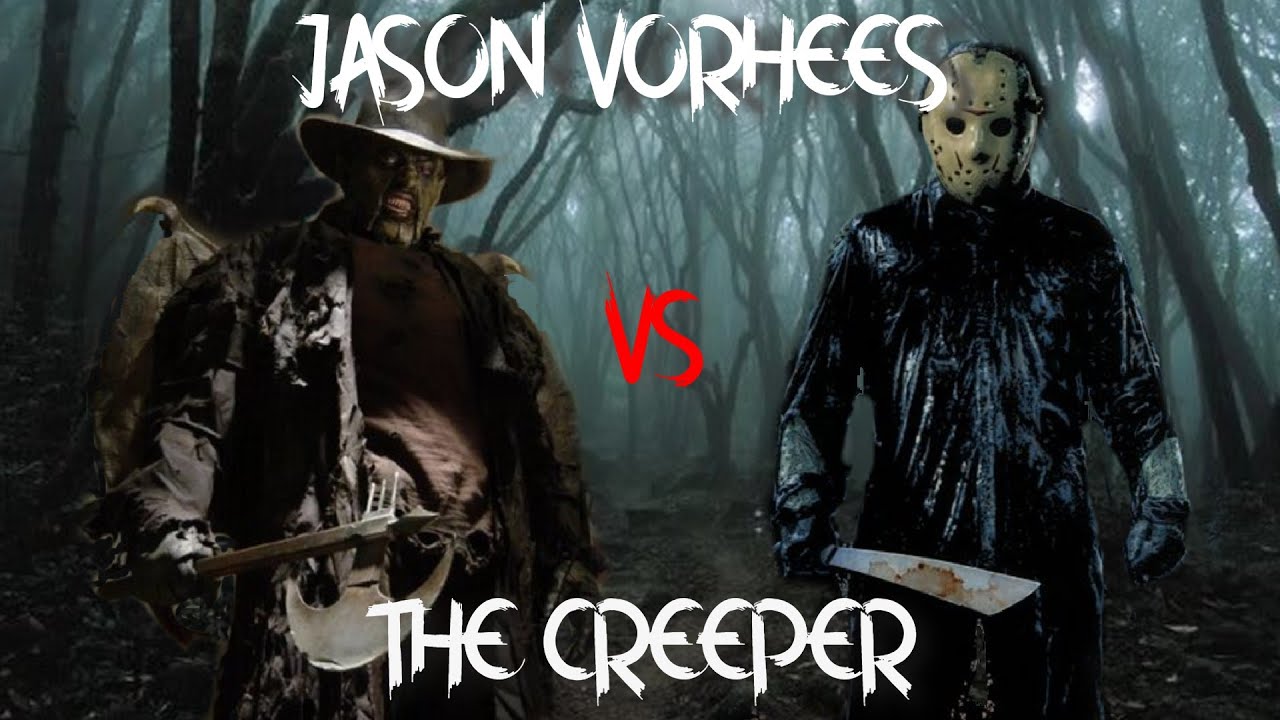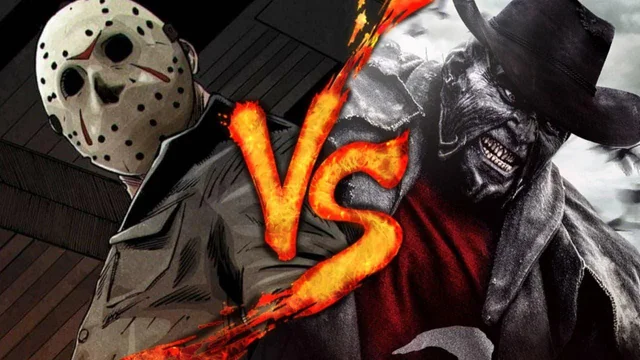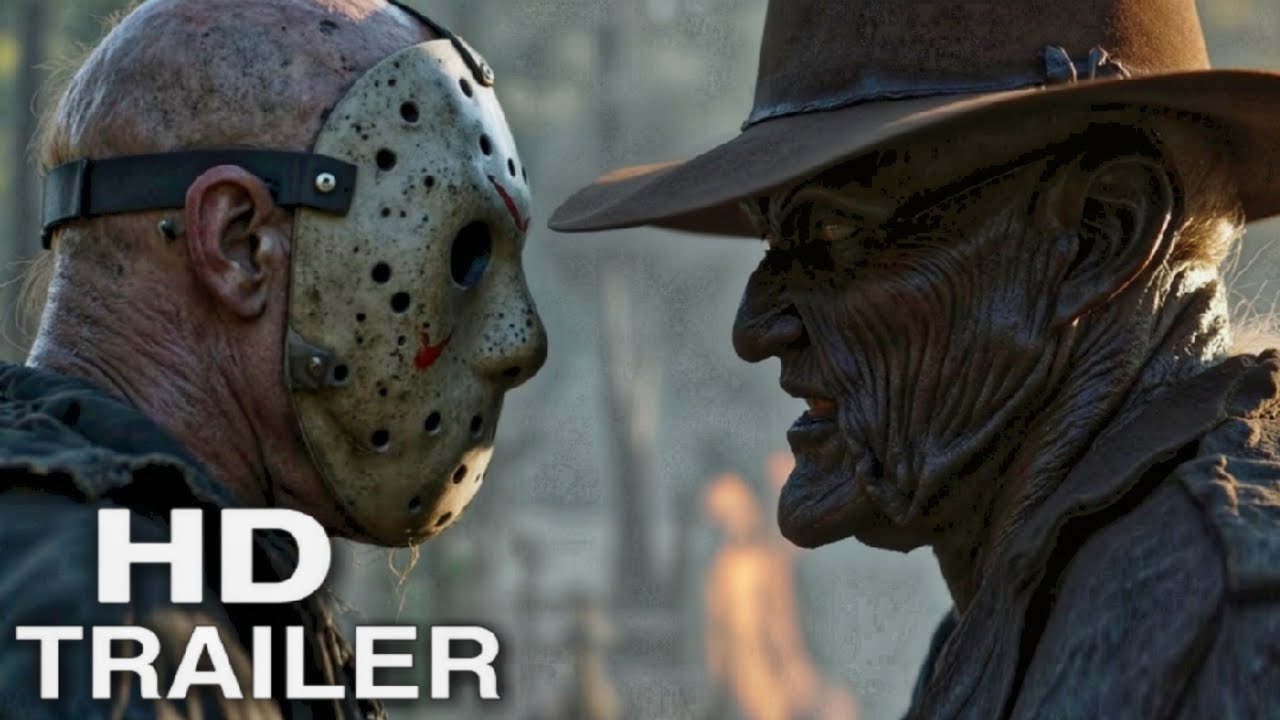Jeepers Creepers vs Jason Voorhees (2025) – The Ultimate Horror Showdown
The world of horror cinema is no stranger to iconic villains, but rarely do two legends collide in a battle for supremacy. Jeepers Creepers vs Jason Voorhees (2025) promises to deliver precisely that: a gruesome, blood-drenched clash between two of the most terrifying figures in horror history. For decades, audiences have shuddered at the sight of Jason Voorhees, the unstoppable slasher of Camp Crystal Lake, whose hockey mask has become synonymous with death and fear. Meanwhile, the Creeper, a centuries-old predator with a grotesque yet hauntingly intelligent form, has haunted audiences with its terrifying method of preying on humans every twenty-three years. The collision of these two forces, under the direction of cult horror mastermind Marcus Dunstan, is a cinematic event designed to push fear to its absolute limit.
From the very first trailer, it is clear that this is not a simple crossover. Marcus Dunstan, known for his work on The Collector and the later Saw films, brings his signature style of tension, meticulous gore, and intricate set pieces to the project. His direction ensures that the horror is visceral, immersive, and psychologically unsettling. Each frame is constructed to maximize dread, balancing moments of shocking violence with lingering suspense. Viewers are immediately drawn into a world where survival is fleeting, and no one—not even a seasoned horror fan—is safe from the relentless pursuit of these predators.

The premise of Jeepers Creepers vs Jason Voorhees is straightforward yet terrifying: when the Creeper awakens during its cyclical hunt, it inadvertently crosses paths with Jason, the immortal killer who has claimed countless victims at Camp Crystal Lake. Both predators are highly skilled in hunting, tracking, and inflicting fear, but their methods differ. Jason relies on brute strength, relentless pursuit, and his intimate knowledge of terror to strike fear into the hearts of his victims. The Creeper, by contrast, is cunning, patient, and disturbingly intelligent, using its supernatural abilities to stalk and overpower its prey with surgical precision. When these two worlds collide, the results are catastrophic, unpredictable, and horrifyingly entertaining.
The narrative takes audiences across multiple settings designed to heighten tension and suspense. From the dense, shadowed forests that echo the Creeper’s eerie presence to the decaying cabins and lakeside campsites haunted by Jason’s past atrocities, the environments themselves become characters in the story. Each location is meticulously crafted to amplify fear, using darkness, silence, and sound design to make even the briefest moment of inaction feel tense and foreboding. Dunstan’s expertise in creating claustrophobic, terrifying spaces ensures that every scene is charged with anxiety and anticipation.

At the heart of the film are the victims—innocent characters whose lives are ensnared by the machinations of two unstoppable killers. While Jason and the Creeper are undeniably the stars, the human characters provide the emotional and narrative anchor. Their fear, desperation, and attempts at survival offer viewers someone to root for, even in a story dominated by relentless horror. Dunstan is careful to craft each character with depth, giving them distinct personalities, fears, and motivations, which makes their peril feel real and their fates impactful. The interplay between the victims’ ingenuity and the killers’ supernatural abilities creates a tense cat-and-mouse dynamic that drives the film’s relentless pacing.
One of the most fascinating aspects of this crossover is the clash of styles between the two villains. Jason, as a figure of pure, unstoppable force, embodies the traditional slasher archetype. He is merciless, almost elemental in his approach to killing, representing an inescapable force of death. The Creeper, on the other hand, is more cunning, blending horror with a macabre sense of intelligence and calculation. Watching these two predators confront one another is both terrifying and oddly thrilling: neither can easily overpower the other, and the audience is left guessing which will emerge victorious. This dynamic elevates the film beyond a simple slasher story into a true horror spectacle, where strategy, brutality, and supernatural power collide in a way never seen before.
The gore and visual horror in Jeepers Creepers vs Jason Voorhees are intense, as expected from a Marcus Dunstan production. The violence is explicit, detailed, and designed to shock, yet it is never gratuitous; each act of brutality serves to heighten suspense, advance the plot, or underscore the capabilities of the killers. The film employs practical effects, digital enhancements, and innovative cinematography to create scenes that are both terrifyingly realistic and visually striking. Fans of extreme horror will find themselves on edge throughout, as the unpredictable nature of the confrontation ensures that no moment is safe or predictable.
Sound design is another critical element in amplifying fear. From the quiet rustle of leaves in a moonlit forest to the ominous thud of Jason’s machete, the film uses audio to manipulate tension and dread. The Creeper’s eerie cries, Jason’s silent but menacing presence, and sudden bursts of noise are strategically deployed to create jump scares while sustaining a constant undercurrent of unease. The soundtrack complements this approach, blending low, pulsating tones with sudden crescendos, mirroring the characters’ escalating peril and keeping viewers on the edge of their seats.
In terms of story progression, the film carefully escalates the stakes. Initial encounters between Jason and the Creeper are marked by testing, feints, and displays of power, establishing each character’s lethal abilities and survival instincts. As the narrative unfolds, both villains escalate their aggression, turning the film into a relentless battle of predator versus predator. Human characters become collateral damage in this war, and the moral ambiguity of who will survive adds a psychological tension that deepens the horror. Unlike standard slasher films, where the threat is external and humans can strategize, here the main conflict is between two virtually unstoppable forces, creating an atmosphere of inevitability and dread.
The pacing of the film is carefully managed. Moments of high-intensity action and visceral horror are interspersed with sequences of suspenseful stillness, allowing tension to build organically. The audience is kept in a constant state of anticipation, never fully knowing what will happen next or who will fall victim to these unrelenting killers. This rhythm mirrors the classic horror storytelling of the original franchises, while also incorporating modern cinematic techniques, such as dynamic camera movements and immersive visual effects, to engage contemporary audiences.
A notable achievement of Jeepers Creepers vs Jason Voorhees is its respect for the legacy of both franchises. Jason’s mythology, from his resurrection to his storied past at Camp Crystal Lake, is carefully honored, ensuring that fans of Friday the 13th feel continuity and authenticity. Similarly, the Creeper’s lore—its cyclical hunting, grotesque appearance, and strategic cunning—is preserved and expanded, giving long-time fans of Jeepers Creepers the tension and dread they expect. By maintaining the integrity of both villains while creating a believable and terrifying scenario where they interact, the film succeeds as a crossover rather than a gimmick.
Visual storytelling is enhanced by striking cinematography and lighting. Dark, moody environments are juxtaposed with moments of stark, blinding horror, such as sudden attacks or gore sequences. Shadows play a significant role in concealing threats, creating a pervasive sense of paranoia. Camera angles emphasize the predatory nature of both villains, highlighting their imposing physicality and the vulnerability of their human victims. Every visual choice is designed to immerse the audience, making the terror feel immediate and unavoidable.
Characterization extends even to the killers themselves. Jason’s stoic, relentless demeanor is contrasted with the Creeper’s more expressive, cunning behavior. While both are devoid of traditional morality, their differences in approach to violence and hunting create an engaging dynamic. The Creeper occasionally shows a degree of intelligence and patience that Jason’s brute force cannot match, while Jason’s sheer indestructibility and unyielding aggression challenge the Creeper in ways that it has not faced before. The interplay between these contrasting styles becomes a central narrative driver, creating suspense that goes beyond mere gore and shock.

The climax of the film is structured as an all-out confrontation between the two monsters, staged across multiple locations and escalating in intensity. Practical effects and CGI are blended seamlessly to create epic set pieces that showcase both villains’ full range of abilities. The audience is treated to high-stakes sequences, including close-quarters combat, environmental hazards, and inventive death traps, culminating in a finale that is both shocking and unforgettable. Marcus Dunstan ensures that the tension never fully abates, leaving viewers questioning which predator will ultimately survive—and if anyone at all will make it out alive.
Beyond the immediate thrills, the film offers subtle thematic exploration of survival, inevitability, and the nature of evil. By pitting two near-immortal killers against each other, the narrative raises questions about power, dominance, and the price of unchecked violence. It challenges the audience to consider what true terror is: the horror inflicted by external forces, or the internal dread of knowing there may be no escape. This depth adds weight to the film, elevating it above a conventional slasher spectacle.
Casting plays a crucial role in grounding the story. While the focus is naturally on the iconic villains, the supporting human cast provides relatability and stakes. Their performances convey genuine fear, resilience, and desperation, heightening the audience’s emotional investment. The contrast between human fragility and monstrous power underscores the horror and reinforces the tension throughout the narrative.

In conclusion, Jeepers Creepers vs Jason Voorhees (2025) represents a landmark moment in horror cinema. It brings together two of the genre’s most formidable icons in a battle that is as brutal as it is thrilling. Under Marcus Dunstan’s direction, the film delivers high-stakes suspense, meticulously crafted gore, and a story that respects the legacy of both franchises. It is a masterclass in horror crossover storytelling, combining relentless action, psychological terror, and inventive cinematic techniques to create an unforgettable viewing experience. Fans of both franchises, as well as newcomers seeking a high-intensity horror spectacle, will find themselves captivated from the first scene to the shocking finale.
The showdown between the Creeper and Jason Voorhees is more than a clash of killers—it is a study in horror, suspense, and survival. It is a celebration of the terror these characters have inspired for decades, now elevated to a new level. With its unforgettable set pieces, terrifying sequences, and masterful storytelling, Jeepers Creepers vs Jason Voorhees promises to be a defining moment in the horror genre, a film that will haunt audiences long after the credits roll.
